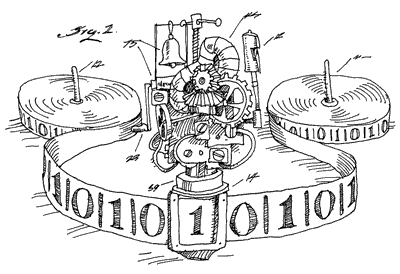Course Materials
Tools
- Laptop computer (during class; let me know if you do not have access to a laptop). Be sure to have the means to log into your account vis-a-vis the 2-factor authentication.
- VT-affiliated Google Drive: Used for organizing and sharing work files.
Texts
You are not required to buy any texts for this course, as I will provide PDF versions. However, here is a list of books and edited collections included on the syllabus for those who wish to purchase their own copies.
List of Readings
- Banks, A. (2006). Race, rhetoric, and technology: Searching for higher ground. LEA and NCTE.
- Blas, Z. and Cárdenas, M. (2013). Imaginary computational systems: queer technologies and transreal aesthetics. AI & Society, 28, pp. 559–566.
- Brown, Jr., J. (2015). Ethical programs: Hospitality and the rhetorics of software. Ann Arbor, MI: University of Michigan Press. Available at http://www.digitalculture.org/books/ethical-programs-hospitality-and-the-rhetorics-of-software/.
- Bivens, R. (27 Jan. 2016). Programming violence under a progressive surface: Facebook's software misgenders users. The Society Pages. Retrieved 06 Feb. 2016 from https://thesocietypages.org/cyborgology/2016/01/27/programming-violence-under-a-progressive-surface-facebooks-software-misgenders-users/.
- Burke, K. (1950/1969). A rhetoric of motives. University of California Press.
- Dadas, C. (2017). Hashtag activism: The promise and risk of “attention.” In D. M. Walls & S. Vie, (Eds.) Social Writing/Social Media: Publics, Presentations, and Pedagogies (pp. 17-36). Perspectives on Writing. Fort Collins, CO: The WAC Clearinghouse and UP of Colorado. Retrieved Jan. 6, 2018 from https://wac.colostate.edu/books/social/.
- Daniels, J. (2012). Race and racism in Internet Studies: A review and critique. New Media & Society, 15, pp. 695–719.
- Edwards, D. (2017). On circulatory encounters: The case for tactical rhetorics. Enculturation, Issue 25. Retrieved 11 Dec. 2017 from http://enculturation.net/circulatory_encounters.
- Freelon, Deen and McIlwain, Charlton D. and Clark, Meredith D, Beyond the Hashtags: #Ferguson, #Blacklivesmatter, and the Online Struggle for Offline Justice (February 29, 2016). Center for Media & Social Impact, American University, Forthcoming. Available at SSRN: https://ssrn.com/abstract=2747066.
- Frith, J. (2017). Big data, technical communication, and the smart city. Journal of Business and Technical Communication, 31, pp. 168-187.
- Haas, C. (1996). Writing technology: Studies on the materiality of literacy. New York, NY: Routledge.
- Harris, R. (2000). Rethinking writing. New York, NY: Continuum.
- Hartzog, M. (2017). Inventing mosquitoes: Tracing the topology of vectors for disease. In C. Boyle & L. Walsh, (Eds.), Topologies as Techniques for a Post-Critical Rhetoric, (pp. 75-98). Cham, Switzerland: Palgrave Macmillan.
- Hawhee, D. (2004). Bodily arts: Rhetoric and athletics in ancient Greece. Austin, TX: University of Texas Press.
- Lamp, K. (2011). ‘A city of brick’: Visual rhetoric in Roman rhetorical theory and practice. Philosophy and Rhetoric, 44, pp. 171-193.
- Lum, K., & Isaac, W. (2016). To predict and serve? Significance, 13(5), 14-19.
- Keyword articles from inaugural issues of Transgender Studies Quarterly, 1(1-2): Bio/Logics, pp. 33-35; Biometrics, pp. 35-38; Biopolitics, pp. 38-42; Microaggressions, pp. 129-134; Performativity, pp. 148-150.
- Mattern, S. (2017). Code + clay … Data + dirt: Five-thousand years of urban media. Minneapolis, MN: University of Minnesota Press.
- Noble, S. U. (2018). Algorithms of oppression: How search engines reinforce racism. New York, NY: NYU Press.
- Poe-Alexander, K. and Hahner, L. A. (2017). The intimate screen: Revisualizing understandings of down syndrome through digital activism on Instagram. In D. M. Walls & S. Vie, (Eds.) Social Writing/Social Media: Publics, Presentations, and Pedagogies (pp. 225-244). Perspectives on Writing. Fort Collins, CO: The WAC Clearinghouse and UP of Colorado. Retrieved Jan. 6, 2018 from https://wac.colostate.edu/books/social/.
- Roundtree, A. K. (2013). Computer simulation, rhetoric, and the scientific imagination. New York, NY: Lexington Books.
- Sano-Franchini, J. (2017). Feminist rhetorics and interaction design: Facilitating socially responsible design. L. Potts and M. Salvo, (Eds.), In Rhetoric and Experience Architecture (pp. 84-110). Anderson, SC: Parlor Press.
- Seaver, N. (2017). Algorithms as culture: Some tactics for the ethnography of algorithmic systems. Big Data & Society, 4(2), pp. 1-12.
- Star, S. L. (1990). Power, technology and the phenomenology of conventions: On being allergic to onions. The Sociological Review, 38(1), 26–56.
- Takayoshi, P., Tomlinson, E., and Castillo, J. (2010). The construction of research problems and methods. In K. Powell and P. Takayoshi, (Eds.), Practicing Research in Writing Studies (pp. 97-121). New York, NY: Hampton Press.
- Vee, A. (2017). Coding literacy. Cambridge, MA: MIT Press.
- Wickman, C. (2013). Observing inscriptions at work: Visualization and text production in experimental physics research. Technical Communication Quarterly, 22, pp. 150-171.
- Yam, S. (2017). Instagramming the Starbucks Bing Sutt: Nostalgia memory kitsch and the construction of cosmopolitan consumer subjects. Enculturation, Issue 25. Retrieved 11 Dec. 2017 from http://enculturation.net/instagramming_the_starbucks_bing_sutt.
- yergeau, m. (2018). Authoring Autism: on rhetoric and neurological queerness. Durham, NC: Duke UP.
List of Supplementary Readings
- Bowker, G. C. & Star, S. L. (1999/2000). Sorting things out: Classification and its consequences. Cambridge, MA: MIT Press.
- Clark, D. (2010). Shaped and Shaping Tools: The rhetorical nature of technical communication technologies. Spilka, Ed., Digital literacy for Technical communication, (pp. 85-102). New York, NY: Routledge.
- Kaptelinin, V. and Nardi, B. (2006). Acting with technology: Activity Theory and Interaction Design. Cambridge, MA: MIT Press.
- Spinuzzi, C. (2003). Tracing genres through organizations: A sociocultural approach to information design. Cambridge, MA: MIT Press.
- Tufekci, Z. (2014). Engineering the public: Big data, surveillance and computational politics. First Monday, 19(7). Retrieved 2 Dec. 2017 from http://firstmonday.org/ojs/index.php/fm/article/view/4901
- Wilson III, E. J. & Costanza-Chock, S. (2012). New voices on the net: The digital journalism divide and the costs of network exclusion. In L. Nakamura & P.A. Chow-White (Eds.), Race After the Internet (pp. 246-268). New York, NY: Routledge.
